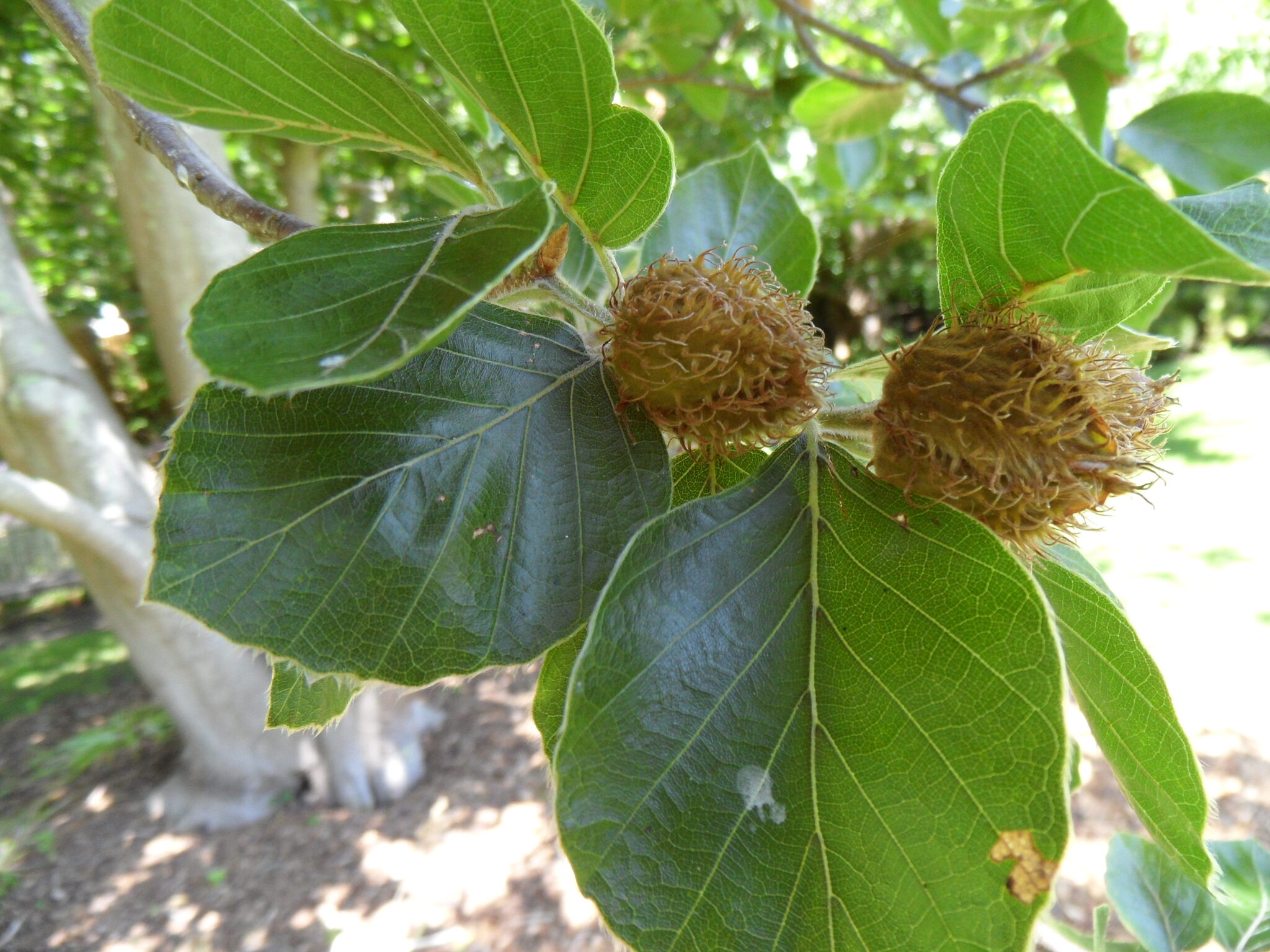
Ancient Latin name, possibly derived from the Greek phago—to eat, the seeds being edible.
Deciduous trees. Bark smooth, grey. Buds narrow, pointed. Leaves alternate, stalked, entire, finely toothed, often with wavy margins, silky hairy, at least when young. Flowers unisexual. Male flowers in long-stalked almost round clusters, perianth 4-6 lobed, stamens 8-12. Female flowers mostly in pairs, perianth 4-6 lobed, surrounded by a scaly cup, stigmas three. Ovary of 3 chambers. Fruit 4-valved with a prickly outer covering containing 1 or 2 ovoid, brown, 3-angled nuts.
Fresh nuts; cultivars by grafting.
Buds narrow and pointed; male flowers in long stalked heads.
About 10 species from the temperate northern hemisphere.
Wyman (1964).
Source: (1997). Fagaceae. In: . Horticultural Flora of South-eastern Australia. Volume 2. Flowering plants. Dicotyledons. Part 1. The identification of garden and cultivated plants. University of New South Wales Press.
